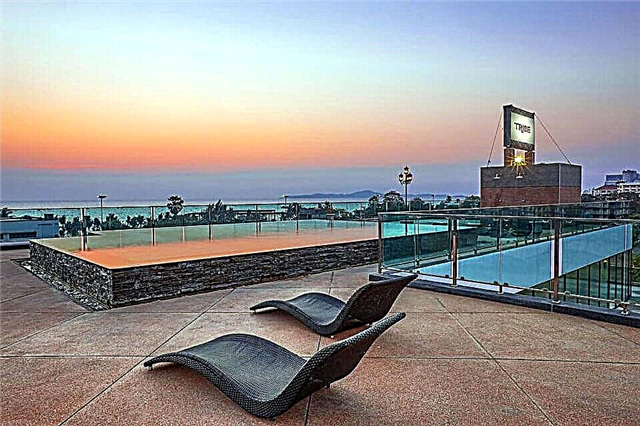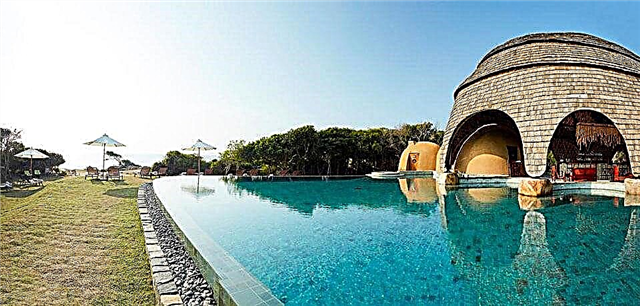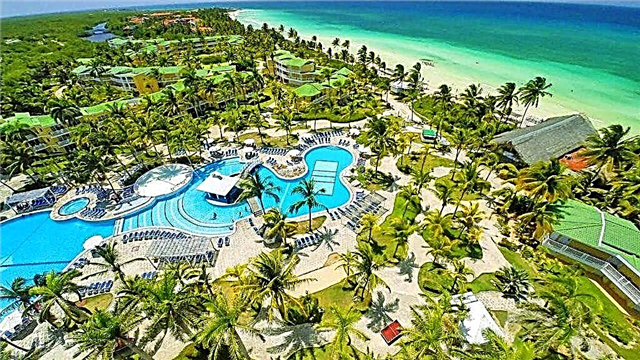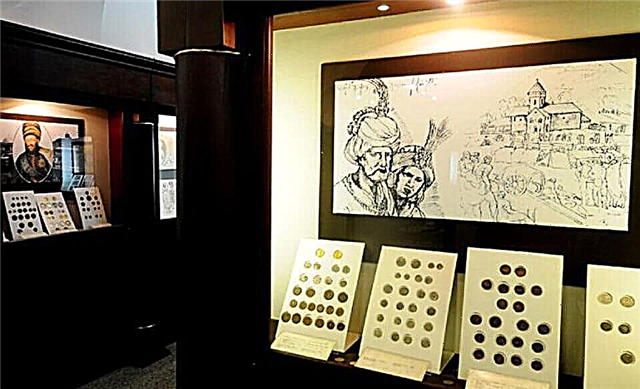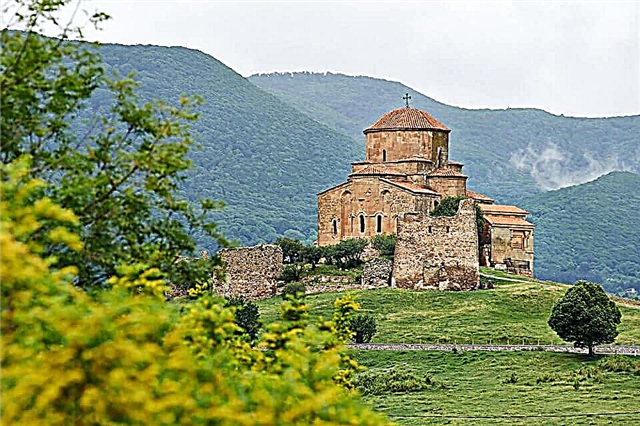If your program of sightseeing the main sights of Tbilisi has been completed, but there is still time, then you should not waste it just like that - in the vicinity of the city other - no less impressive - tourist places are waiting for you. And, of course, you can visit them on your own, but it is better to do it as part of an excursion in order to save time and not worry about the prospect of getting lost somewhere in the middle of the gorges. We will tell you where you can go from Tbilisi for one day.
Uplistsikhe and Gori

Gori, the birthplace of Stalin, is located only 12 km from the cave city of Uplistsikhe, and therefore these two attractions are often visited in pairs. The history of Uplistsikhe goes back 4 millennia, so this place is actually a living cut of the remains of religious and architectural structures of various peoples. Initially, there was a sanctuary of a certain female deity, but gradually, utility and household premises were carved right into the solid rock, and elevated buildings appeared. The city's flourishing was brutally interrupted by Christians who completely destroyed the local culture.
From the ancient center of paganism, Uplistsikhe became an ordinary fortress city. Recently, a full-scale renovation was carried out, and the city sparkled with new colors. Gori today is strongly associated with Soviet nostalgia and the personality of Joseph Stalin. In addition to the museum, which contains many of the leader's personal belongings, there is also a brick house that was moved here from the "Russian quarter". And even an armored carriage in which Stalin traveled to Yalta, Potsdam and other cities to sign contracts.
Mtskheta and Jvari temple

Mtskheta is an ancient historical center, which is often called the "Second Jerusalem". It is located at the confluence of two rivers and for a long time retained the status of the oldest capital of Georgia. Many local attractions are protected by UNESCO. For example, the Jvari temple, a cult monument of early Georgian Christianity. The austere beauty of strict lines is not disturbed by decorative elements, in perfect harmony with the harsh appearance of the local nature. The outer walls are decorated only with reliefs on the facades.
Inside the room, fragments of ancient mosaics are still preserved, as well as the foundation, where, according to legends, the Holy Cross was to be installed, symbolizing the emergence of Christianity in Georgia. However, earlier the temple looked different. From the surviving descriptions, it becomes clear that the cross was previously open, and any traveler could see it from afar. If you find yourself at the temple, be sure to tie a ribbon to the Wish tree, which grows on one of the windy slopes of Jvari.
Sighnaghi

This city is often called the city of love. It stands among the hills and offers the best views of the Alazani Valley. He owes his nickname to Pirosmani, a talented artist who is a native of these lands. It was he who once decided on a beautiful gesture and paved the road of red roses for his muse and beloved. Today practically nothing is known about the history of Sighnaghi. There is fragmentary information that King Heraclius II in the 18th century ordered the creation of this city, presumably as a refuge from Persian attacks.
Gradually, the city fell into decay, but already in the 20th century, local authorities began a full-scale restoration. Now the narrow cobbled streets and tiny houses under red tiled roofs look very well-groomed and are buried in colorful blooms. But there is also a downside to such a verified beauty - Sighnaghi is good if you want to see a tourist model in full size, but you should not go here if you are determined to immerse yourself in the real pulsation of Georgian life. For this you will have to visit one of the surrounding villages.
David Gareji

A large complex of cave monasteries with a common name stretches along the Georgian border. Today, their importance in the local religious world is comparable to Jerusalem - thousands of pilgrims annually visit the David Gareji monastery, founded in the 6th century, when Saint David, taking 12 monks with him, decided to settle in the Gareja desert. So, they settled in one of the caves and followed the path of complete asceticism. Gradually, the local caves were filled with followers of David. In particular, Saint Dodo, inspired by his example, founded a monastery here, which today is called the Dodo-Rka cave complex and is considered one of the most significant components of David Gareji.
It will take more than one day to explore all the local monasteries, so tourists usually limit themselves to the “small circle”, which includes the Lavra of David and Tetri-Udabno. You will need no more than 3 hours to examine them. The Lavra of David has both aboveground and cave premises. It is the most beautiful architectural monument of the complex and has ancient frescoes preserved in their authentic form.
Catechia

Initially, the Catechia had the status of an independent kingdom, but today it is a region rich in ethnographic and cultural senses, where many religious monuments are concentrated. In addition, it is famous for its wines, which are perhaps the most famous of all Georgian wines, and the Tushino mountains. Just 10 years ago there was a kind of Georgian Siberia here, but today the local infrastructure is quite developed.
Most of the oldest local temples are scattered along the Gombori ridge, but it will not be so easy to find them - they were built mainly during the Persian occupation, and therefore the masters tried to make them as unremarkable as possible. The most famous today is the Nekresi monastery, which rises high above the Alazani plain. There are also dead cities in the Catechia - ancient settlements, abandoned for one reason or another. Of the latter, Kverter settlement, Gremi town and Bochorma fortress are accessible for visiting.
Kazbegi

It was here that the first Russian-Georgian settlement was once located - among the mountains and piercing winds. This is exactly that corner of Georgia, which it is simply impossible not to fall in love with - this place has too lively, clean atmosphere. Unfortunately or fortunately, most of Kazbegi's sights can only be reached on foot. It's worth starting with the Trinity Church, which is located on the top of the mountain. In cloudy weather, the valley is not visible - only heavy clouds, in clear weather, glaciers sparkling in the sun's rays and even Kazbek - another visiting card of Georgia - can be seen from here.
This mountain is covered with snow all year round and has an extremely wayward character - only real daredevils risk climbing here. You can test yourself and join one of the groups that go to conquer Kazbek every day. Another most beautiful natural treasure of Kazbegi is the Darial Gorge - an extremely picturesque place, but just as dangerous - glaciers often come down here, and local rocks are steep. But it is still worth going down to the bottom - there, among the sparkling white boulders and smooth stones, there are Tamara's castle and the Archangel temple.
Dmanisi and Bolnisi

A trip to Dmanisi and Bolnisi is guaranteed to turn into a short journey into the world of Georgia's historical past, in those distant times when the Christian banner appeared in the Caucasus, and the Georgian language began to acquire its characteristic features. Gradually moving south, you will come across numerous monuments of architecture and history of the 5-6 centuries, which, as you know, are still the most intense and mysterious in the history of Georgia.
Modern Bolnisi stands on the site of the ancient city of Tsurtavi, which for some unknown reason simply disappeared once from all maps. Its main attraction is Bolnisi Zion - the oldest temple in Georgia, whose status is officially determined. The origins of Dmanisi are more definite - it stands 10 km from the fortress city of the same name, which was destroyed during the Middle Ages. Excavations of the 12th century settlement are still being carried out on the territory. Thus, the preserved more and less integral parts of the city are open for visiting: the three-church basilica, a unique monument of the 6th century, the church vestibule, part of the fortress walls and the city gates.
Akhaltsikhe and Vardzia

By itself, Akhaltsikhe does not represent anything at all interesting, unless, of course, you are going for the romance of rural life. But here are some sights that are conditionally related to the city, are quite worth visiting. Among the latter are the Rabat fortress, the abandoned sulfur baths and the Vardzia cave monastery. The history of the monastery is directly related to the personality of Queen Tamara, whose father ordered to carve several caves in solid rock.
Once upon a time, the Assumption Church stood on this place. At a certain moment, its aboveground part was destroyed. The queen ordered to transfer it to the cut-through caves and decorate with frescoes. The order was carried out exactly, and soon the first monks began to gather in the colorfully painted temple, and its territory began to grow. Gradually, the temple became more and more complex in terms of construction - the underground premises increased, and sacristy, refectory and outbuildings appeared on the surface.

A couple of centuries later, Vardzia turned into an excellently fortified city-fortress, in which, in case of danger, the entire population of the adjacent territories could hide. The decline began in the 16th century with the arrival of the Persians first, and then the Turks, who killed the monks and robbed the monasteries. Since that moment, the city has lost its religious value and never managed to recover, becoming a cult architectural monument.
Kutaisi

Kutaisi is an unusually beautiful city that lies on both banks of the Rioni River. From the ancient Georgian "kuato" can be translated as "rocky", which is completely true for this city - it stands on a rocky plateau. Kutaisi is one of the oldest cities in world practice, and therefore the presence of dozens of sights of the "old" age is by no means surprising. The old town lies on the right bank. If you look at it from the opposite bank, there is an association with swallow's nests - small two-story houses, built a couple of centuries ago, huddle closely to the slopes.
From the glass hemisphere of the Parliament building, a new city begins on the left coast - skyscrapers growing from perfectly mowed lawns. Numerous bridges-arms are thrown across Rioni, from which you can take high-quality panoramic pictures of the city. Among the most important tourist sites are the 10th century Bagrat temple, the Motsameta monastery, built on the site of the Muslim massacre of Georgians, and Okros Chardakhi, the former residence of the kings.
Trusokhevi gorge

Truso or Tyrsygom gorge is a truly amazing place. Mineral springs, geysers, pristine beauty of nature, organically complemented by the ruins of ancient buildings and villages that were abandoned by people too long ago. For centuries, this gorge was considered one of the most dangerous and inaccessible in Georgia. To see the panorama of the valley, you have to drive along the serpentine. The road is extremely winding and runs along the glacier, which in no way makes it safer. But it's worth it.

Ketrisi-type villages are scattered throughout the gorge. Several shepherds and milkmaids live in it. The local population has increased slightly at the expense of the nunnery sisters, but it is still extremely small. It is noteworthy that the masters of the construction of towers have long settled in the gorge, and today almost every village has its own shard of architectural thought sticking out of the stronghold.



